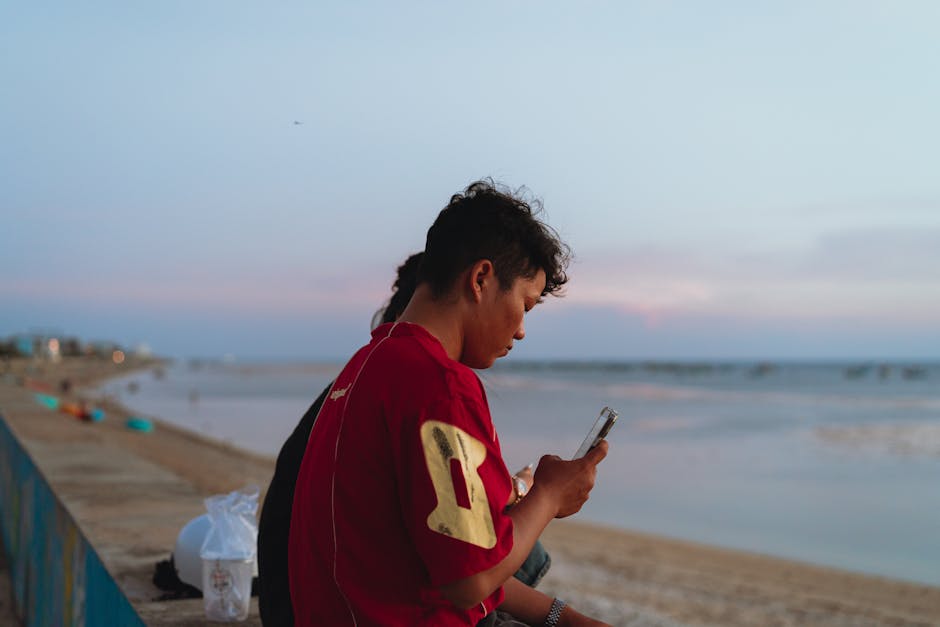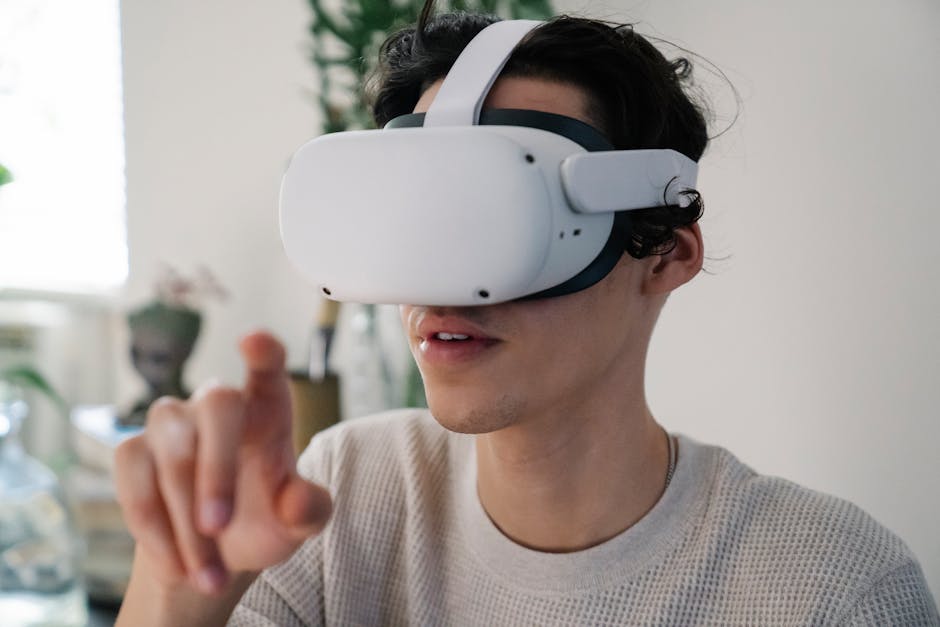Democratizing Knowledge: Dive into Local Histories Digitally
As we progress into a world increasingly fueled by technology, one of the most remarkable transformations we are witnessing is the democratization of knowledge. Digital tools are reshaping how we engage with local histories, making them accessible to everyone, regardless of geographical or socio-economic barriers. This shift is not just about availability; it's about creating immersive experiences that connect people with their roots, enhancing their understanding, and fostering community pride. In this article, we will explore how these digital tools are rendering local histories into virtual experiences, enabling us to interact with our past like never before.
Understanding the Digital Landscape

In today's hyper-connected world, the landscape for accessing and sharing knowledge has fundamentally changed. Gone are the days when local history was confined to dusty archives and libraries. Instead, today we have an impressive array of digital tools—from social media platforms to augmented reality applications—enabling rich storytelling that engages younger generations and preserves local narratives.
Take a moment to consider how often you read local stories online or stumble upon insightful videos that recount significant local events. This surge in information sharing can largely be attributed to an ecosystem powered by innovation, where tools like websites, podcasts, digital archives, and mobile apps collaborate to paint a comprehensive picture of the past. This is not merely passive consumption; it’s an active engagement with history that invites everyone to participate in preserving and interpreting their local narrative.
The Rise of Virtual Tours

One of the most significant innovations in the digital storytelling realm has been the rise of virtual tours. For example, platforms such as Google Arts & Culture offer users the ability to explore historical artifacts and museums from the comfort of their homes. These tours don’t just provide a glimpse into the past; they create a tangible connection to local narratives that may have otherwise been overlooked. As more organizations embrace virtual tours, communities benefit from increased foot traffic—both online and eventually in person—driving engagement and interest in local culture.
To further deepen your understanding of how technology can transport you to unique experiences, explore our article on AI's impact on digital storytelling.
Augmented Reality (AR): Enhancing Historical Engagement

Augmented Reality (AR) takes the concept of virtual tours a step further by overlaying digital content onto the real world. Museums and historical sites are now using AR applications to provide interactive experiences that blend digital data with physical spaces. Imagine walking through a local monument only to have your smartphone provide you with detailed insights about each feature, right at your fingertips.
This method of education is incredibly potent. By combining analytics and storytelling, AR creates immersive scenarios that can be particularly beneficial for schools and educational setups. Students can engage with history lessons in an interactive manner, bridging the gap between textbook knowledge and experiential learning. Not only does this digital tool captivate interest, but it also fosters a deeper understanding of one's local history.
Furthermore, if you are curious about how AR can be utilized beyond educational applications, check out our post on The impact of AR on everyday learning.
Local History Projects and Crowdsourcing

Digital tools have not only transformed how stories are told but also how they are collected. Crowdsourced platforms enable communities to contribute their own histories, photographs, and stories, thus empowering residents to reclaim narratives that are often marginalized or forgotten. Projects like StoryCorps or local history campaigns on social media allow individuals to document personal experiences tied to regional history, creating a rich tapestry of insights and perspectives.
This collaborative history-capturing approach ensures that a more diverse range of voices is heard, leading to a comprehensive portrayal of community identities. It’s about democratizing the narrative, providing historical context, and validating the personal experiences that contribute to the broader tapestry of local history.
Engaging Through Storytelling Platforms

In a world where the art of storytelling is paramount, leveraging digital platforms has become a crucial element for local historians and community members alike. Blogs, podcasts, and social media have turned everyday citizens into narrators of their own experiences. With just a smartphone and a connection to the internet, these voices can reach vast audiences, breaking geographical barriers and making local histories accessible to anyone with an interest.
For instance, locality-focused podcasts have surged in popularity, offering communities a medium to investigate their history today. These audio narratives can bring to life untold stories, from individual narratives to entire familial legacies passed down through generations. This alignment of technology and storytelling not only illuminates local history but also invites the active participation of the community in understanding their past.
To explore the role of AI in curating compelling narratives, make sure to check out our insights on AI-enhanced digital storytelling.
The Role of Digital Archives

Digital archives serve as the backbone for preserving local histories in a way that is searchable and accessible. Local governments and communities increasingly digitize books, newspapers, archives, and other historical documents, allowing anyone with internet access to delve into a rich database of their region's past. These resources are invaluable for researchers, educators, and curious individuals who are interested in the evolution of their communities.
Moreover, beyond mere digitization lies the opportunity for metadata tagging, which enhances searchability and allows users to discover connections that would otherwise go unnoticed. Think about the potential for a student researching local history to uncover stories of their ancestors in regional newspapers, thus making history personal and relevant. Each click can unveil layers of history that might contribute to a broader understanding of current social dynamics.
Future Trends: Mixed-Reality Experiences

As technology continues to evolve, we can expect to see the integration of mixed-reality experiences that combine elements of both AR and Virtual Reality (VR). These immersive environments can allow users to "walk" through different time periods of their local history or experience significant events as they unfold.
For instance, imagine a mixed-reality project that lets users experience a day in the life of a local hero during a significant historical event. These projects could revitalize interest in local history while preserving the essence of what has come before.
Curious about how to create these immersive setups? Our article on the importance of personal digital time capsules can help provide context for future generations.
The Importance of Digital Ethnography

Digital ethnography is an emerging field that analyzes how online interactions impact cultural narratives. This practice is crucial for understanding how local histories are being reshaped by contemporary digital tools. By observing how individuals engage with platforms to share their histories, researchers can gain insight into the dynamics of community identity and memory-making in a digital context.
Projects leveraging digital ethnography might involve documenting how local residents interact through social media groups dedicated to sharing stories or neighborhood events. Such projects can offer invaluable insights into how local histories evolve and resonate with community members in modern contexts, thus enhancing historians' and sociologists’ understanding of cultural continuity and change.
Engaging Youth Through Gaming and Learning

The use of gaming in education is another fascinating intersection where local history can be brought to life. Games that emphasize exploration and storytelling not only engage younger audiences but also provide opportunities for them to learn about their local areas’ histories in an interactive format.
Consider how projects might utilize gamification to create scavenger hunts or educational games that encourage users to explore their neighborhoods, enhancing their appreciation for local culture. As these projects gain traction, they could serve as high-impact connective experiences that foster community pride and increase knowledge retention.
Legal Considerations in Digital Storytelling

As digital tools democratize access to local histories, it is crucial to navigate the legal implications of sharing stories and preserving artifacts. Issues surrounding copyright, fair use, and consent become increasingly relevant as organizations and individuals use the internet to document shared histories.
Ensuring that storytellers respect rights while communicating their narratives will protect both the storyteller and the integrity of the historical account. Thus, establishing guidelines for content sharing will enhance the operation of projects aimed at preserving local history, ensuring they are ethical and sustainable.
Final Thoughts
The transformation of local histories into virtual experiences through digital tools is nothing short of revolutionary. These mediums, from virtual tours to social media platforms, not only provide fresh opportunities for engagement but they also foster a sense of community ownership over local narratives.
As we look to the future, the synergy of technology, community involvement, and storytelling will offer even richer narratives that encompass the voices of many—including the often-ignored demographic segments. Whether through augmented reality, podcasts, or crowdsourced efforts, the journey of uncovering and democratizing local history has only just begun.
So, what steps can you take in your community? Start a local history project, join a storytelling group, or leverage technology to document the rich tapestry that makes your community unique. Together, we can enrich our understanding of the past while preparing ourselves and future generations to carry forward our shared histories into the future.



